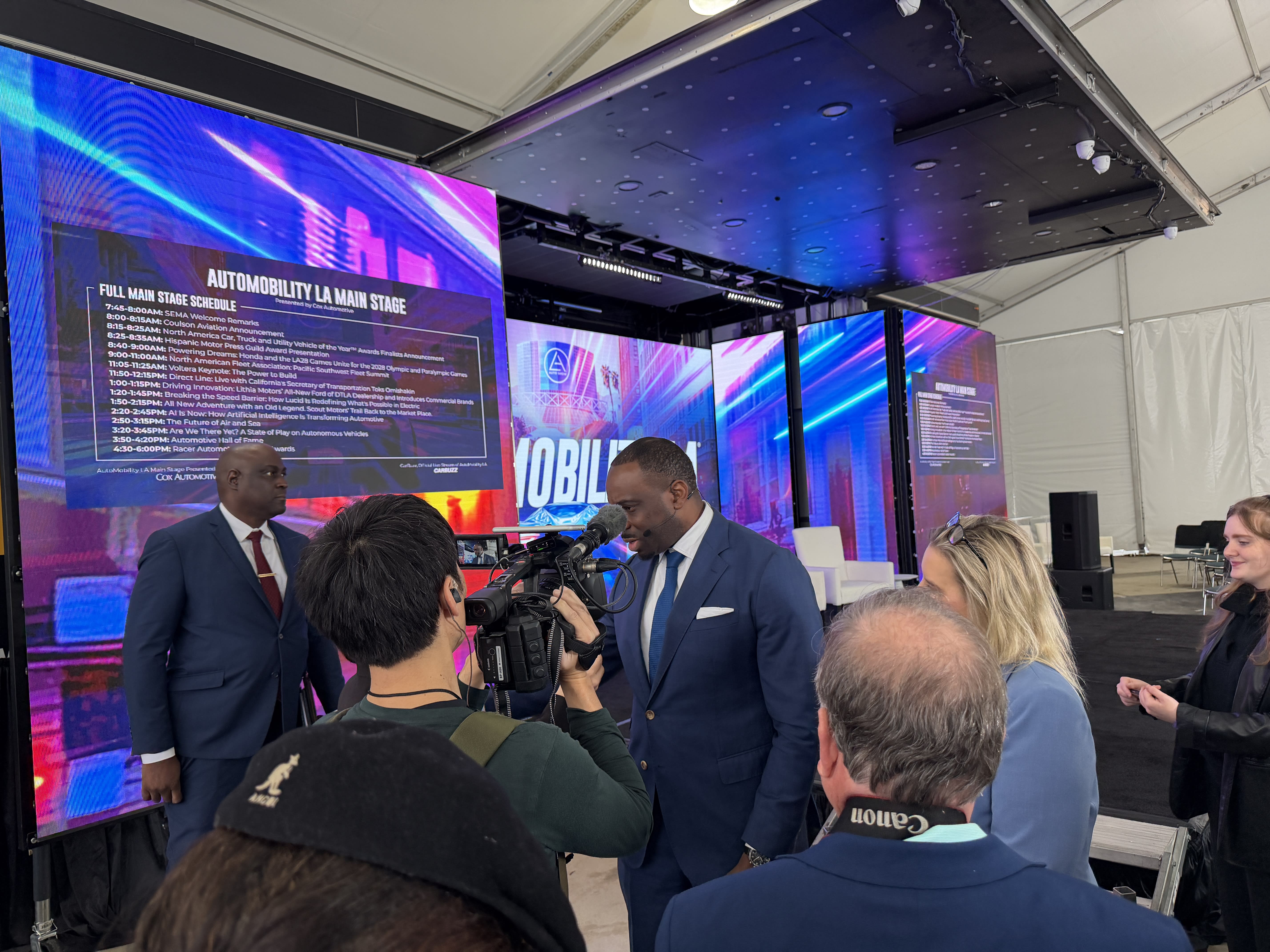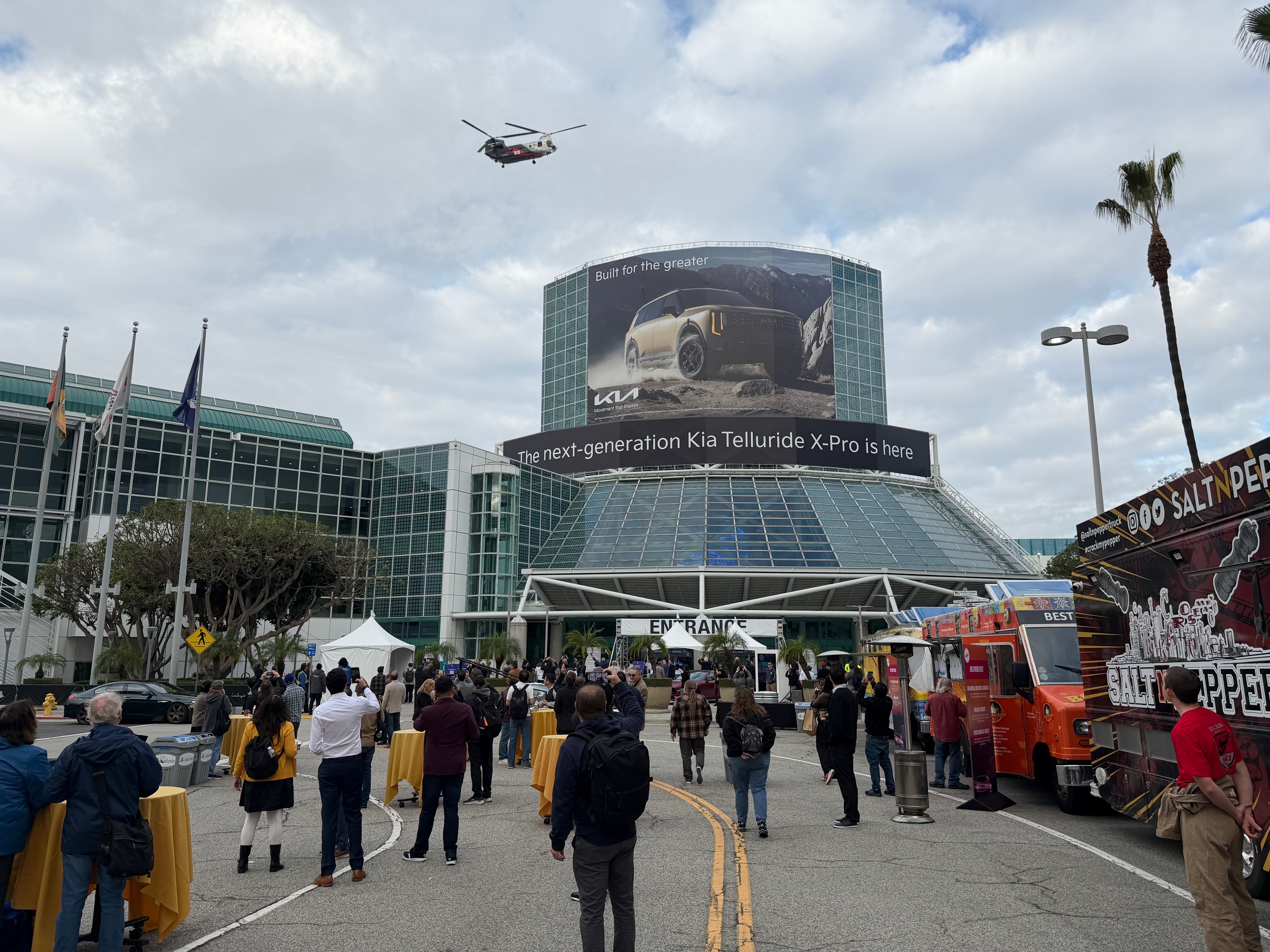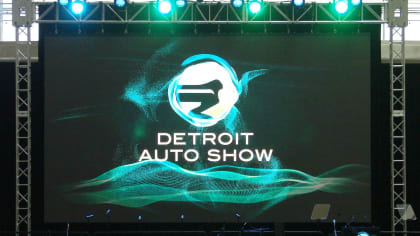THE SECRETARY CAME TO TOWN

California’s Transportation Secretary arrived at the 2025 Los Angeles Auto Show to answer questions about the state’s response to the elimination of federal EV incentives.. The answers yielded more questions.
By Zoran Segina
Fri, Nov 21, 2025 05:23 PM PST
Featured image above: California Transportation Secretary Adetokunbo “Toks” Omishakin spoke at the LA Convention Center ahead of the public opening of the 2025 LA Auto Show ( Nakano photogtraph).
Listening to California Transportation Secretary Adetokunbo “Toks” Omishakin’s presentation at the 2025 Los Angeles Auto Show, one could be cautiously hopeful about the Golden State’s electric vehicle future. Almost thirty percent of the vehicles on the road will be zero emission, four million ZEVs have been sold, the sales are growing, and the production is at pre-pandemic levels. California plans to install two hundred thousand EV nozzles so that no driver of electric car would be more than ten minutes way from a charging station.
Headwinds
The Secretary acknowledged that California is encountering “headwinds,” but assured us that the long-term vision of reducing greenhouse gasses is unchanged. He confidently stated that the ZEVs are the most valuable California export sought by the consumers. The majority of car dealerships, however, need to train its sales force because they currently lack experts on ZEVs.
The Secretary’s vision is marred by some unpleasant facts. In November 2024, Governor Gavin Newsom pledged to provide California residents with EV rebates if the federal government eliminates its EV tax credit. Toward the end of September 2025, he backtracked, stating that California cannot make up for the expiring federal credit and would not replace it, especially with the unanticipated expenses of other federal programs that were cut or delayed, like SNAP, that states needed to address.
Questions 67 and 68*
To follow up, we submitted the following questions to the Secretary in preparation for his appearance at the LA Auto Show’s Automobility LA press day:
With the lack of affordability affecting many Californians, what was the rationale behind improving EV charging grid… instead of using the funds for tax credits to EV purchasers thereby satisfying, at least in part, Governor Newsom's November 2024 promise?
Before November 2024, did his department provide any data to Governor Newsom to analyze the cost of California EV tax credits? What would be the projected cost of upholding Governor Newsom's November 2024 pledge?

Empirically, higher prices decrease EV sales and the prospective purchasers opt for cheaper gas-powered vehicles instead. Doesn't this lack of financial incentive defy the state’s interest in increasing the number of EV vehicles in California? On the other hand, the OEMs would need to decrease the sticker price to build extra interest in EVs if there are no rebates. So, in a roundabout way, the rebates provided to consumers are offered as a means to subsidize the car manufactures and that allows those companies to charge more.
The Answers Yielded More Questions
The impediment to ZEV growth appears to be not a lack of trained salesmen but the fact that most people cannot afford them. Taking away the $7,500 incentive will hurt. A requirement that, in 2035, all new cars sold in California must be ZEV is a goal that we are aiming for. The Secretary told us that Caltrans bought 600 Rivian trucks for its 12,000 vehicle fleet thereby increasing ZEV percentage from six percent to eighteen. Rivian, just like any other car company, loses money on each truck sold because the production costs exceed the MSRP until the company sells a large enough volume to offset the cost of production. Did Caltrans purchase make the slightest difference in light of Rivian’s recent announcement that it is slashing its staff by 600?
Here is a pesky issue that gets little attention. As of early 2025, California had approximately 35.98 million registered vehicles, including cars, trucks, and motorcycles. The Secretary’s stated goal of 30 percent ZEVs would bring the number of electric vehicles to ten million. Will California have enough energy to power the additional EVs?
Limited electric power might require consumers to make difficult choices if it comes down to it, charging the car or running the A/C at home, especially if the cost per kilowatt increases. Then again, without action on our part, the consequences of unchecked emissions that alter our world can result in damages that impact not just our pocketbooks, but it will also affect our health and more*. In short, pick your poison carefully.
* Who knew the Chicago Transit Authority song “Questions 67 and 67” was really about the EV community’s love affair with the State of California?
* Increasing temperatures due to emissions requires more electricity to power A/C units. It’s a double-edged sword.

The Secretary Came to Town
Presented by Cox Automotive and hosted by Juliette Ferrara of Sirius XM Media
A YouTube of Secretary Adetokunbo “Toks” Omishakin’s answer regarding California’s response to the revocation of Federal tax credits and other incentives for at the 2025 Los Angeles Auto Show is about to go live. Stay tuned.
2025 LA Auto Show
When:
November 21-30, 2025
Show Hours
Where:
LA Convention Center
1201 S Figueroa Street
Los Angeles, 90015
What:
Automotive brands and ride & drives
Tickets:
LA Auto Show ticket page
About The Author

Zoran Segina grew up in Eastern Europe, where he owned several Zastava 750s (a variation of the Fiat 600) and participated in local rallies. After a lengthy diet of Yugoslav-manufactured cars, he came to the Mecca of automotive culture – wherein he promptly lost his heart to a tall girl and a short Dart Swinger. He currently commutes around LA in a BMW 633Csi, having made a switch from a Volvo 240 DL with a quarter million miles on the odometer.














